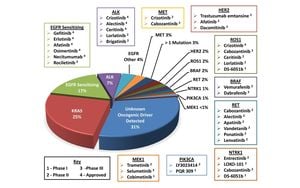Magh Purnima 2025: Significance And Observances Of The Sacred Full Moon Day
On the 12th of February 2025, millions of Hindu devotees prepare for Magh Purnima, also referred to as Maghi Purnima—an auspicious full moon day marked prominently within the Hindu lunar calendar. This day is significant as it heralds the end of the Magha month and is especially revered among worshippers of Lord Vishnu. The observance is not merely ritualistic; it is imbued with deep-rooted cultural and religious significance, drawing devotees to sacred rivers for purification rituals. According to reports from Jagran English, “bathe at the holy river on Maghi Purnima is considered highly auspicious.”
When the moon rises on this day at 06:27 PM, the air will be thick with prayers and hopes as believers flock to the confluence of rivers, particularly at Prayag's Triveni Sangam during the Kumbh and Magha Melas. Notably, this year, Purnima Tithi will start on the evening of 11th February at 06:55 PM, concluding on the following day at 07:22 PM, with various auspicious times designated for specific rituals. These timings are important as they guide devotees’ actions throughout this sacred occasion.
The tradition encompasses several sacred rituals such as taking holy baths, providing food and charity to the underprivileged, and engaging fervently in prayers and chanting of mantras. On this day, devotees worship both Lord Vishnu and Lord Hanuman, hoping to solicit blessings and guidance. “The wishes of those who worship these deities are fulfilled,” states Jagran English, highlighting not just the ritualistic aspects, but the belief systems intertwined with faith and practice.
Cultural folklore deeply interweaves with these observances, as mythology suggests deities descend to Earth during this month, making the rivers particularly sacred. A surge of believers is expected to gather at the riverbanks during these celebrations, seeking to wash away sins and accrue merit through charitable acts, as noted by India TV: “On this day, devotees feed and donate to poor people and Brahmins.”
A significant part of these observances involves the rituals of donation and fasting. According to tradition, along with taking holy baths, devotees partake in charitable acts, the essence of which is to seek purification and blessings. Common items donated on Magh Purnima include food, clothes, and money; with some adhering to the custom of donating sesame, which holds traditional significance within Hindu customs. Rituals on the day may include chanting the Gayatri Mantra or reciting 'Om Namo Narayan' mantra numerous times, promoting both mindfulness and connection with the divine.
While rituals are observed with devotion, there are also notable restrictions during Magh Purnima, particularly concerning items deemed unsuitable for donation. Avoiding the donation of items like iron, salt, and silver is believed to ward off negative outcomes. Specifically, iron is considered unfavorable due to its association with displeasing Shani (Saturn), as noted by India TV’s guidelines. Similarly, the donation of salt is cautioned against, as it bears associations with Rahu, which could invite adverse effects.
Notably, among the key actions recommended on this day is the worship of Goddess Lakshmi, where offerings of kheer (a rice pudding) and flowers are presented to invite blessings of prosperity. Conducting the pooja (worship ritual) of one's wealth container or cash reserve on Magh Purnima is also regarded as beneficial, enhancing economic fortune and thwarting financial misfortunes through ceremonial acknowledgement of wealth.
The day concludes with communal sentiments shared among families and friends. Messages of goodwill encourage unity and hope, characterized by wishes like,



